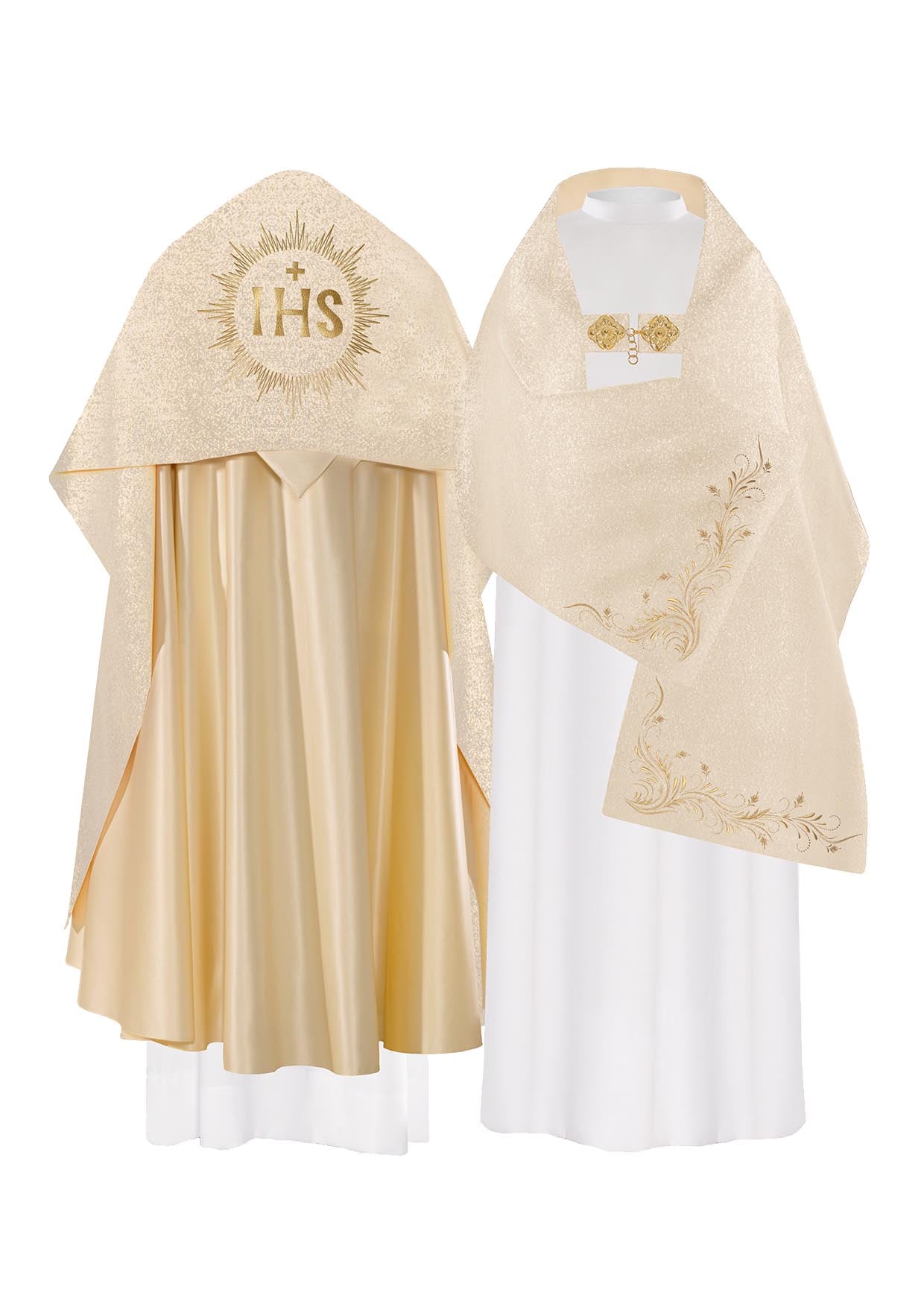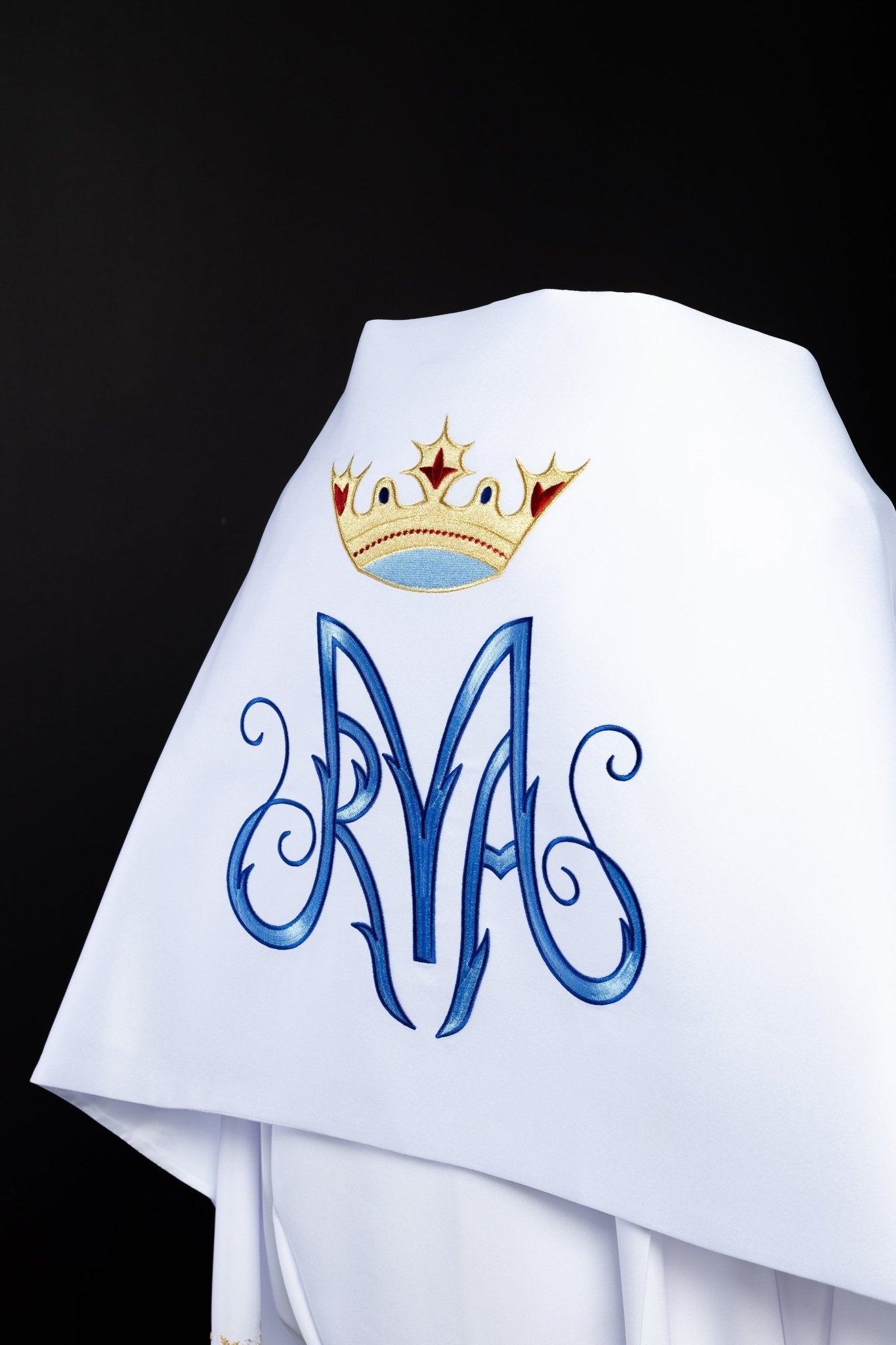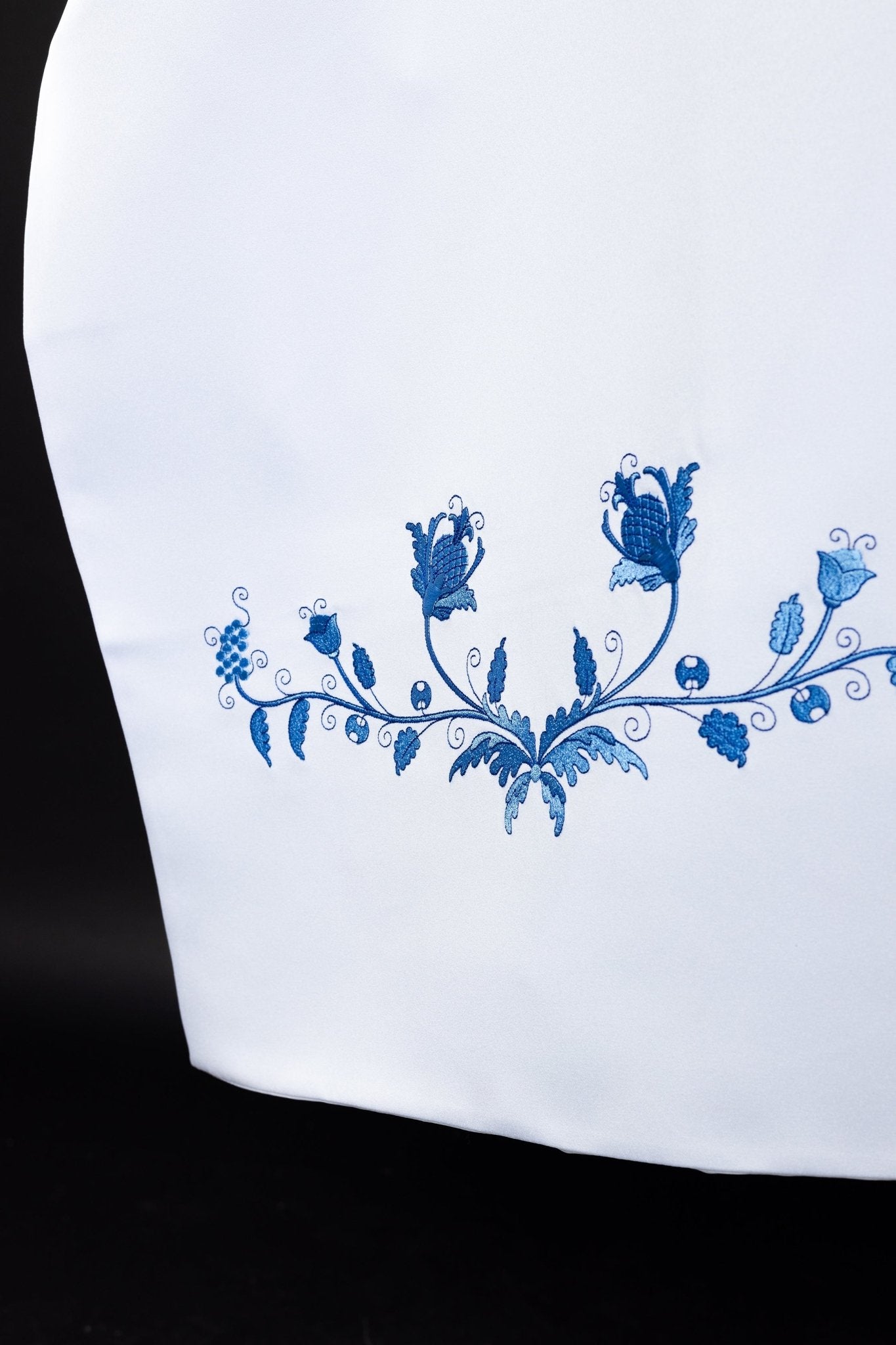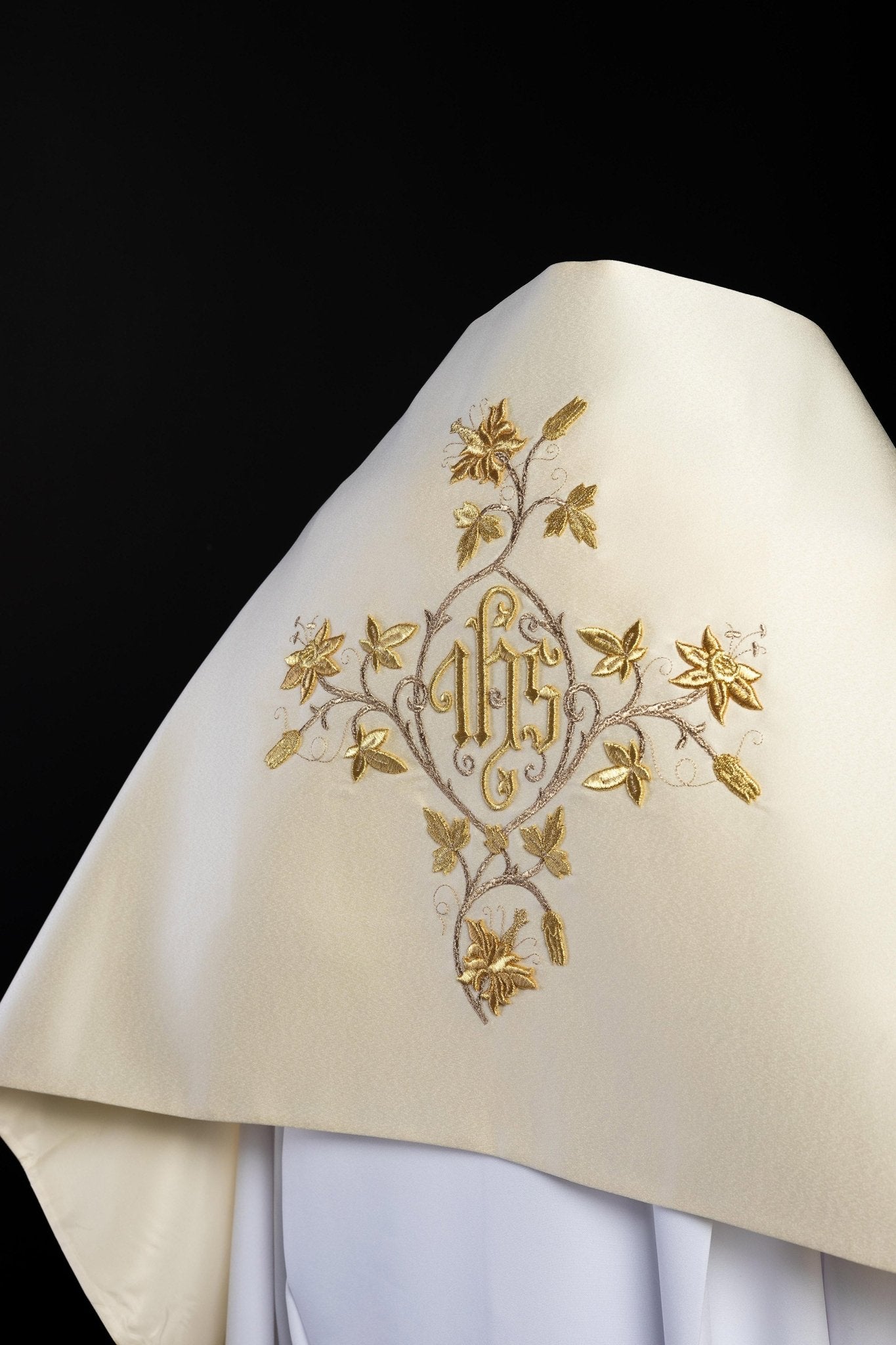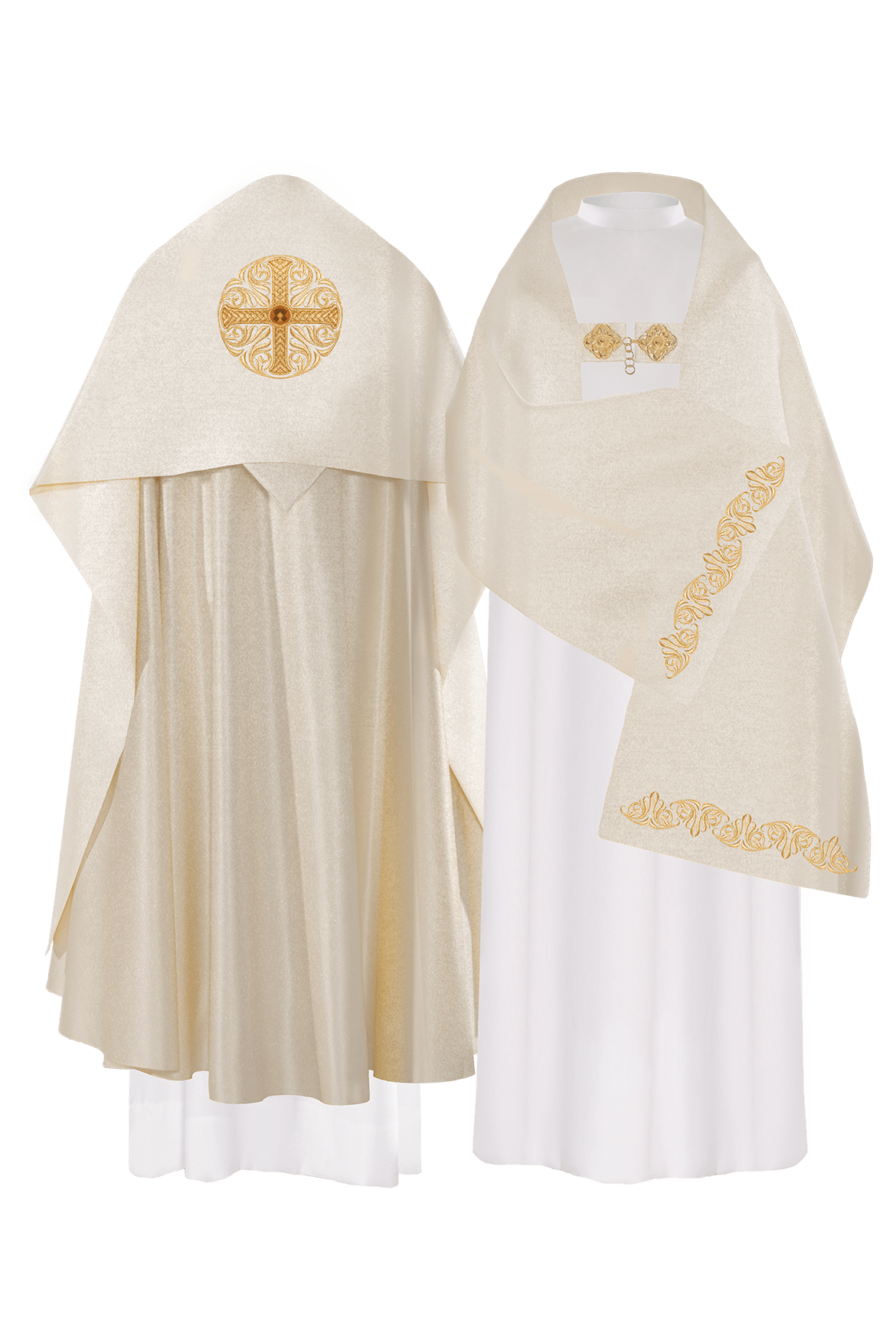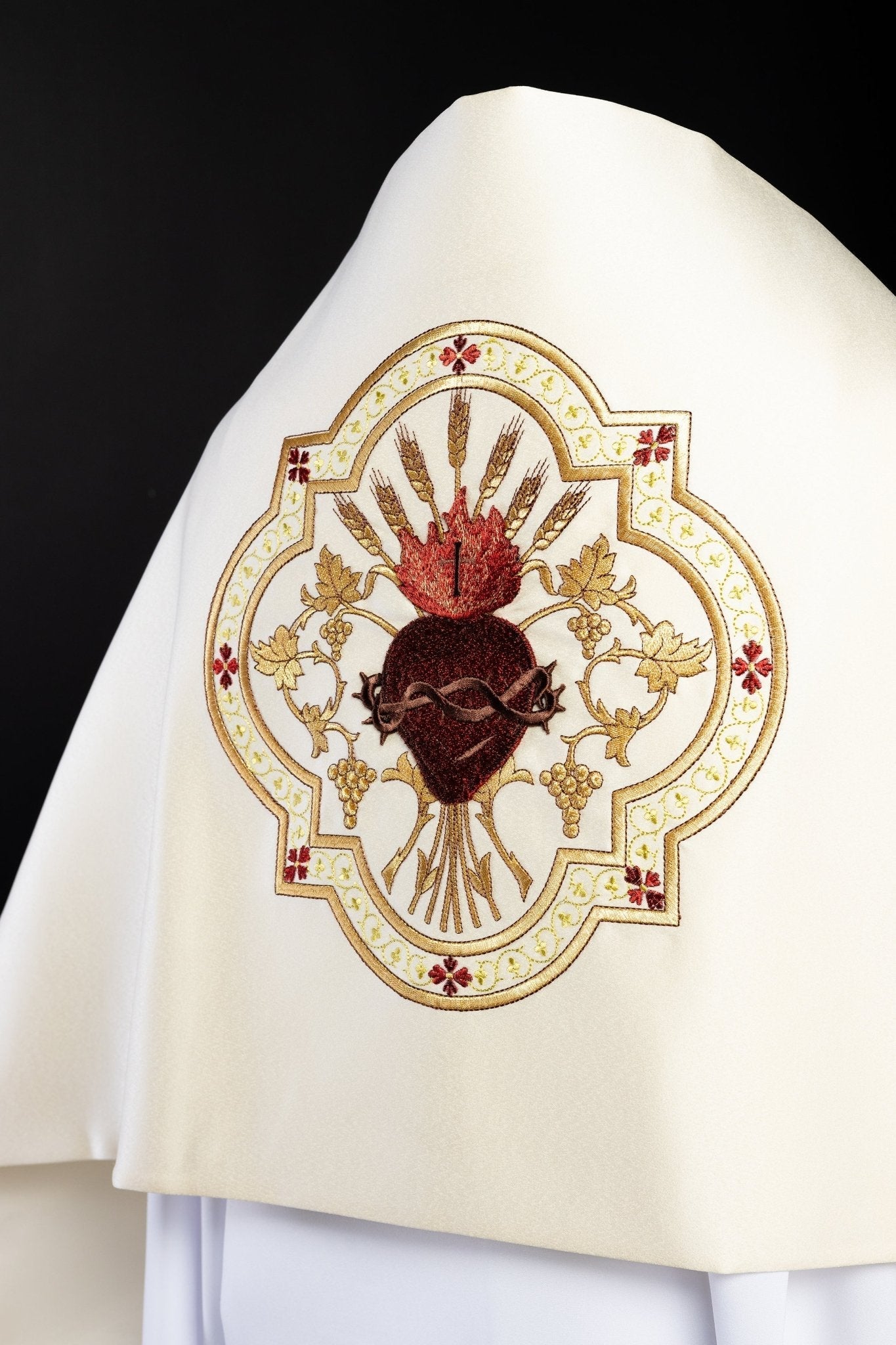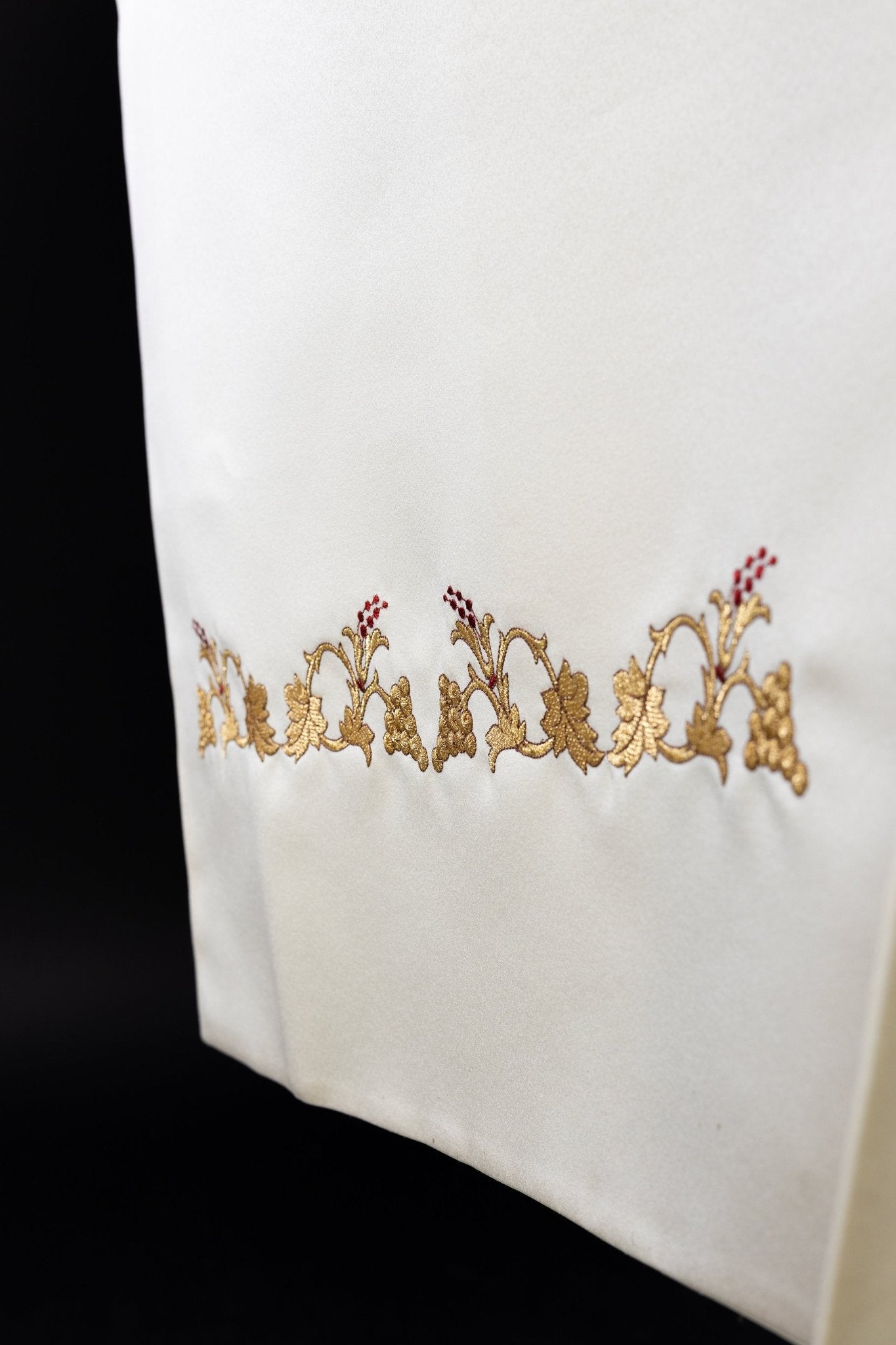Humeral Veils: Sacred Vestments for Eucharistic Adoration
Understanding the Significance of Humeral Veils
Humeral veils are essential liturgical vestments used in various Christian traditions, particularly within the Roman Catholic Church. These veils hold deep symbolic meaning and play a critical role in the solemn ceremonies of Eucharistic Adoration, Benediction, and the transfer of the Blessed Sacrament. Understanding the history, purpose, and proper usage of humeral veils is crucial for clergy and laity alike.
The History and Origins of Humeral Veils
The origins of the humeral veil can be traced back to the early Middle Ages. Initially, these veils were simple cloths used to protect the hands of the clergy when handling sacred objects. Over time, they evolved into more elaborate vestments, adorned with intricate embroidery and rich fabrics. The humeral veil's primary function has always been to show reverence and respect for the sacred items it covers or is used to carry.
During the medieval period, the use of humeral veils became more formalized, with specific guidelines established for their design and usage. The veils were often made from expensive materials such as silk and velvet, reflecting the importance of the sacraments they were associated with. The tradition of using humeral veils has continued through the centuries, with modern designs often incorporating both traditional and contemporary elements.
The Purpose and Function of Humeral Veils
The humeral veil serves several important functions within the liturgy. Its primary purpose is to protect the hands of the priest or deacon when handling the Blessed Sacrament. This practice underscores the belief that the Eucharist is the true body and blood of Christ and should be treated with the utmost reverence.
Additionally, the humeral veil symbolizes the covering of the priest's humanity, allowing him to act as a vessel of Christ during the sacred rites. By veiling his hands, the priest diminishes his personal presence, emphasizing that it is Christ who is truly present and active in the Eucharist. This act of humility and reverence is a powerful reminder of the sacredness of the sacrament.
Materials and Design of Humeral Veils
Humeral veils are typically made from high-quality fabrics such as silk, velvet, or brocade. These materials are chosen for their beauty, durability, and ability to hold intricate embroidery. The veils are often adorned with religious symbols, such as crosses, monograms of Christ (IHS), or images of saints.
The design of the humeral veil usually consists of a long, rectangular piece of fabric with a pocket or clasp in the center. This allows the priest to securely hold the ends of the veil while carrying the monstrance or other sacred objects. The length of the veil is designed to cover the priest's hands and arms, providing a visual barrier between his hands and the sacred object.
Various colors and styles of humeral veils are used to correspond with the liturgical seasons. White or gold veils are typically used for feasts and solemnities, while green, red, or purple veils may be used during Ordinary Time, Passiontide, or Advent, respectively. The choice of color helps to enhance the liturgical atmosphere and convey the specific meaning of the season.
The Use of Humeral Veils in Eucharistic Adoration
Eucharistic Adoration is a central practice in the Catholic Church, involving the worship and veneration of the Blessed Sacrament exposed in a monstrance. The humeral veil plays a crucial role in this ceremony, as it is used by the priest or deacon to carry the monstrance from the tabernacle to the altar.
During Adoration, the priest will carefully place the humeral veil over his shoulders, ensuring that his hands are covered as he holds the monstrance. This action symbolizes the reverence and protection afforded to the Eucharist. The priest then processes to the altar, where the monstrance is placed for the faithful to adore.
The use of the humeral veil during Eucharistic Adoration is a powerful visual reminder of the sacredness of the Eucharist and the importance of reverence in worship. It helps to create an atmosphere of solemnity and devotion, encouraging the faithful to deepen their relationship with Christ.
The Use of Humeral Veils in Benediction
Benediction is a short service that typically follows Eucharistic Adoration. During Benediction, the priest blesses the congregation with the Blessed Sacrament. The humeral veil is essential during this ceremony, as it is used to hold the monstrance while imparting the blessing.
As the priest prepares to give the blessing, he places the humeral veil over his shoulders, covering his hands. He then lifts the monstrance and makes the sign of the cross over the congregation. The humeral veil ensures that the priest's hands do not directly touch the monstrance, maintaining the reverence and respect due to the Eucharist.
The Benediction service concludes with the reposition of the Blessed Sacrament in the tabernacle. The priest, still wearing the humeral veil, carries the monstrance back to the tabernacle, completing the cycle of Adoration and Benediction.
Proper Care and Maintenance of Humeral Veils
Given the sacred nature of humeral veils and the valuable materials they are made from, proper care and maintenance are essential. Here are some guidelines to ensure the longevity and beauty of these vestments:
-
Storage: Humeral veils should be stored in a clean, dry place, away from direct sunlight. It is best to hang them or lay them flat to prevent creases and wrinkles.
-
Cleaning: Depending on the fabric, humeral veils may require professional cleaning. Silk and velvet veils should be handled with extra care to avoid damage. Gentle spot cleaning may be appropriate for minor stains, but always test a small, inconspicuous area first.
-
Ironing: If ironing is necessary, use a low heat setting and place a protective cloth between the iron and the veil. Avoid ironing directly over embroidery or delicate embellishments.
-
Handling: Always handle humeral veils with clean hands to prevent the transfer of dirt and oils. When not in use, keep them covered to protect them from dust and damage.
Choosing the Right Humeral Veil
Selecting the right humeral veil involves considering several factors, including the liturgical season, the style of the vestments, and the personal preferences of the clergy. Here are some tips to help you choose the perfect humeral veil:
-
Liturgical Season: Choose a veil that corresponds with the liturgical color of the season. White or gold veils are suitable for feasts and solemnities, while green, red, or purple veils may be used during other times of the year.
-
Style: Consider the overall style of your vestments. A simple, elegant veil may be appropriate for a more traditional setting, while a more elaborate, embroidered veil may be suitable for a grander occasion.
-
Material: Select a fabric that is both beautiful and durable. Silk, velvet, and brocade are all excellent choices, but be sure to consider the ease of care and maintenance.
-
Size: Ensure that the veil is the appropriate length for the priest or deacon who will be wearing it. The veil should cover the hands and arms comfortably, without being too long or cumbersome.
-
Embroidery: Choose a design that is meaningful and appropriate for the occasion. Religious symbols, such as crosses or monograms of Christ, are always a good choice.
Where to Purchase High-Quality Humeral Veils
When purchasing a humeral veil, it is important to choose a reputable supplier that offers high-quality vestments. Look for companies that specialize in liturgical fabrics and embroidery, and that have a proven track record of customer satisfaction.
Online retailers, such as HaftinaUSA GROUP SP. Z O. O., offer a wide selection of humeral veils in various styles, colors, and materials. Be sure to read reviews and compare prices before making a purchase. You may also consider visiting a local religious goods store to see the veils in person and receive expert advice.
The Symbolism of Colors in Humeral Veils
The colors used in humeral veils are not arbitrary they carry significant symbolic meanings that align with the liturgical calendar. Understanding these colors can deepen one's appreciation for the sacredness of the vestment.
-
White: Represents purity, joy, and glory. It is used during the Easter and Christmas seasons, as well as for feasts of the Lord, the Blessed Virgin Mary, and saints who were not martyrs.
-
Gold: Often used interchangeably with white, gold symbolizes majesty and solemnity. It is appropriate for high feasts and solemn occasions.
-
Red: Signifies blood, passion, and divine love. It is worn on Pentecost, feasts of martyrs, and Good Friday.
-
Green: Represents hope and life. It is used during Ordinary Time, symbolizing the ongoing life of the Church and the hope of eternal life.
-
Purple: Signifies penance, humility, and preparation. It is used during Advent and Lent, seasons of reflection and repentance.
-
Rose: A variation of purple, rose is used on Gaudete Sunday (Third Sunday of Advent) and Laetare Sunday (Fourth Sunday of Lent) to signify a pause in the penitential season and a glimpse of the joy to come.
-
Black: Symbolizes mourning and is used on All Souls' Day and at Requiem Masses.
The Craftsmanship Behind Humeral Veils
Creating a humeral veil is a labor of love that requires skilled craftsmanship and attention to detail. The process often involves several steps, from selecting the finest fabrics to meticulously embroidering intricate designs.
Embroidery is a key element in many humeral veils. Skilled artisans use various techniques, such as goldwork, silk shading, and needlepoint, to create stunning visual effects. The designs often feature religious symbols, biblical scenes, or intricate patterns that reflect the beauty and majesty of the divine.
The creation of a humeral veil is not merely a craft it is an act of devotion and reverence. The artisans who create these vestments understand the sacred purpose they serve and strive to create works of art that honor God and enhance the liturgy.
Humeral Veils in Different Christian Traditions
While humeral veils are most commonly associated with the Roman Catholic Church, they are also used in other Christian traditions, such as the Anglican and Orthodox churches. The specific designs and uses may vary, but the underlying purpose remains the same: to show reverence and respect for the sacred elements of the liturgy.
In the Anglican Church, humeral veils are sometimes used during the celebration of the Eucharist and other solemn occasions. The designs may be similar to those used in the Catholic Church, but with variations to reflect Anglican traditions and symbols.
In the Orthodox Church, veils are used extensively in the liturgy, including veils for covering the chalice and paten. While the specific term "humeral veil" may not be used, the principle of covering sacred objects to show reverence is a common practice.
Modern Innovations in Humeral Veil Design
While tradition is important, modern innovations are also finding their way into the design of humeral veils. Contemporary artists and designers are experimenting with new materials, techniques, and styles to create vestments that are both beautiful and functional.
Some modern humeral veils incorporate lightweight, breathable fabrics that are more comfortable to wear in warm climates. Others feature innovative embroidery techniques that allow for more intricate and detailed designs. Some designs incorporate modern art elements while adhering to traditional liturgical norms.
Despite these innovations, the core purpose of the humeral veil remains unchanged: to show reverence and respect for the Blessed Sacrament. Modern designers are careful to balance innovation with tradition, ensuring that the vestments continue to serve their sacred purpose.
The Importance of Humility and Reverence
The use of the humeral veil is a powerful reminder of the importance of humility and reverence in worship. By veiling his hands, the priest diminishes his personal presence, emphasizing that it is Christ who is truly present in the Eucharist.
This act of humility is not just for the priest it is a call to all believers to approach the sacraments with a spirit of reverence and awe. The Eucharist is the source and summit of the Christian life, and it should be treated with the utmost respect and devotion.
As we participate in the liturgy, let us be mindful of the sacredness of the Eucharist and strive to cultivate a spirit of humility and reverence in our hearts. The humeral veil serves as a visual reminder of this important virtue, helping us to deepen our relationship with Christ and grow in holiness.
Conclusion: Honoring Tradition and Embracing the Sacred
Humeral veils are more than just pieces of fabric they are sacred vestments that play a vital role in the liturgy. From their historical origins to their modern-day uses, humeral veils have served as a powerful symbol of reverence and respect for the Blessed Sacrament.
By understanding the history, purpose, and proper usage of humeral veils, we can deepen our appreciation for the sacredness of the liturgy and grow in our relationship with Christ. Whether you are a priest, deacon, or layperson, let us all strive to honor tradition and embrace the sacred in our worship.


